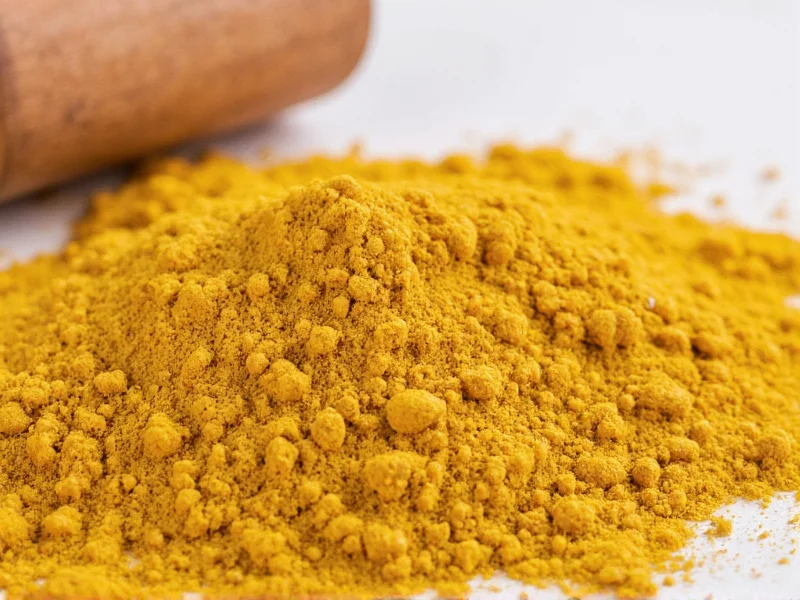Running out of dry mustard mid-recipe doesn't have to ruin your cooking plans. Whether you're making barbecue sauce, salad dressing, or baked goods, knowing reliable dry mustard substitutes keeps your culinary projects on track. This guide provides tested alternatives with precise measurements so you can maintain flavor integrity in any dish.
Understanding Dry Mustard's Role in Cooking
Dry mustard, also called mustard powder, delivers concentrated flavor without moisture. Its primary components—mustard seeds, turmeric, and sometimes paprika—provide tangy, slightly spicy notes that enhance sauces, marinades, and baked items. Unlike prepared mustard, dry mustard dissolves completely, making it ideal for recipes requiring smooth texture.
Top Dry Mustard Substitutes Ranked by Effectiveness
| Substitute | Conversion Ratio | Best For | Flavor Notes |
|---|---|---|---|
| Prepared Yellow Mustard | 1 tbsp = 1 tsp dry mustard | Sauces, dressings, meatloaf | Adds moisture; reduce other liquids by 1 tsp |
| Mustard Seeds (crushed) | 1½ tsp = 1 tsp dry mustard | Pickling, spice rubs | Requires grinding; provides texture |
| Dijon Mustard | 1 tbsp = 1 tbsp dry mustard | Creamy sauces, gourmet dishes | Stronger flavor; adds richness |
| Vinegar + Turmeric Blend | ¼ tsp turmeric + 1 tsp vinegar = 1 tsp dry mustard | Baking, cheese dishes | Mimics color; less tangy |
When to Choose Specific Substitutes
Not all substitutes work equally well in every application. Consider these guidelines when selecting your dry mustard replacement:
For Baking and Dry Mixes
Use the vinegar-turmeric blend when moisture content matters. In cheese straws or cornbread, replace 1 tablespoon dry mustard with ¼ teaspoon turmeric plus 1 teaspoon white vinegar. This maintains the dry ingredient ratio while preserving color.
For Marinades and Wet Applications
Prepared mustard shines here. When substituting dry mustard in barbecue sauce or salad dressing, use 1 tablespoon prepared mustard for every teaspoon of dry mustard called for. Remember to reduce other liquids by 1 teaspoon per substitution to maintain consistency.
For Pickling and Preserving
Crushed mustard seeds provide authentic texture and gradual flavor release. Grind 1½ teaspoons yellow mustard seeds to replace 1 teaspoon dry mustard. The seeds will hydrate during the pickling process, delivering complex flavor notes that mimic dry mustard's effect.
Avoiding Common Substitution Mistakes
Chefs often make these errors when replacing dry mustard:
- Ignoring moisture content - Prepared mustards add liquid that can throw off recipe balance
- Using horseradish alone - While spicy, it lacks mustard's distinctive tang without vinegar adjustment
- Overcompensating with spice - Mustard's heat builds slowly; adding too much substitute creates immediate, overwhelming heat
For best results, always taste as you adjust. Start with 75% of the recommended substitution amount, then incrementally add more until desired flavor is achieved.
Storage Tips for Substitutes
Unlike dry mustard (which retains potency for 2-3 years when stored properly), many substitutes have shorter shelf lives. Keep these storage guidelines in mind:
- Prepared mustards last 1-2 months refrigerated after opening
- Crushed mustard seeds lose potency within 2 weeks; grind only what you need
- Vinegar-based substitutes maintain quality for 3-4 weeks refrigerated
Label homemade substitute blends with preparation dates to ensure freshness. Discard any mixture showing color changes or off odors.
Special Considerations for Dietary Restrictions
For gluten-free cooking, verify that prepared mustard substitutes don't contain wheat-based vinegars. Most standard yellow mustards are naturally gluten-free, but specialty varieties may include malt vinegar. Vegan cooks should check for honey in Dijon-style substitutes, as some brands use sweeteners in their formulations.
Frequently Asked Questions
Can I use wasabi powder as a dry mustard substitute?
Wasabi powder makes a poor direct substitute due to its intense heat and different flavor profile. In small amounts (1/8 teaspoon wasabi per 1 teaspoon dry mustard), it can provide heat but lacks mustard's tang. Better alternatives include horseradish powder mixed with vinegar.
How do I substitute dry mustard in cheese sauce?
For cheese sauces, use Dijon mustard at a 1:1 ratio. The emulsifying properties prevent curdling while adding complexity. If avoiding additional moisture, create a paste with 1 teaspoon Dijon and 1 teaspoon cornstarch before adding to the sauce.
Why does my substitute make my dish too sour?
This happens when using prepared mustards without adjusting other acidic ingredients. Reduce vinegar or lemon juice by half when substituting 1 tablespoon prepared mustard for dry mustard. The sourness should balance as the dish cooks.
Can I make my own dry mustard substitute blend?
Yes. Combine 2 parts ground yellow mustard seed, 1 part turmeric, and ¼ part garlic powder. Store in an airtight container for up to 3 weeks. Use at a 1:1 ratio for dry mustard in most recipes.
Does the type of vinegar matter in substitutes?
Yes. White vinegar provides neutral acidity for baking applications. Apple cider vinegar adds fruity notes suitable for dressings. Avoid balsamic or red wine vinegars in most dry mustard substitutions as their strong flavors alter the intended taste profile.











 浙公网安备
33010002000092号
浙公网安备
33010002000092号 浙B2-20120091-4
浙B2-20120091-4